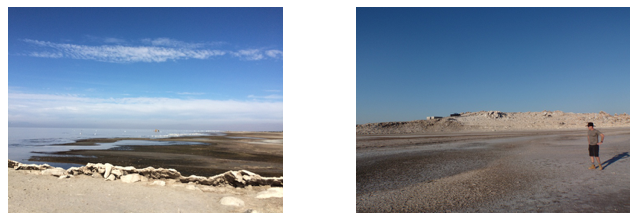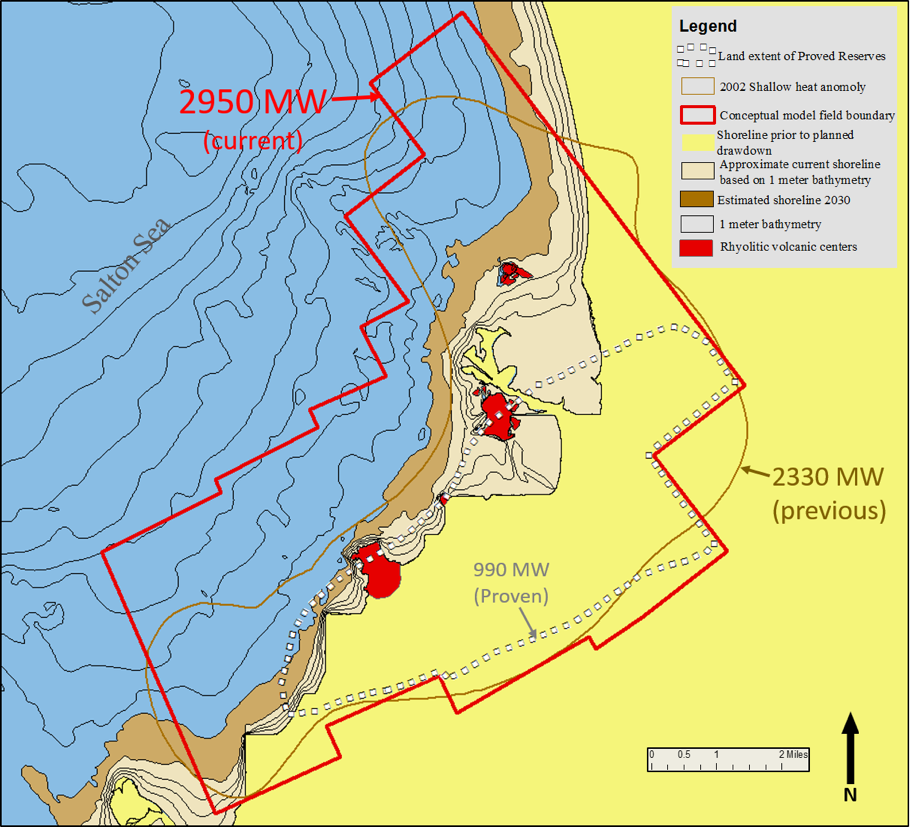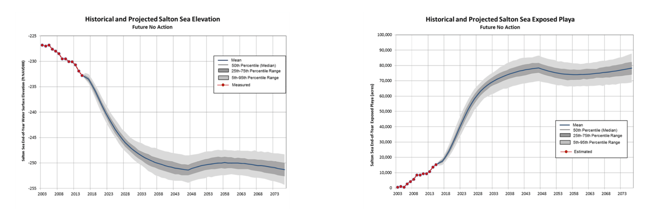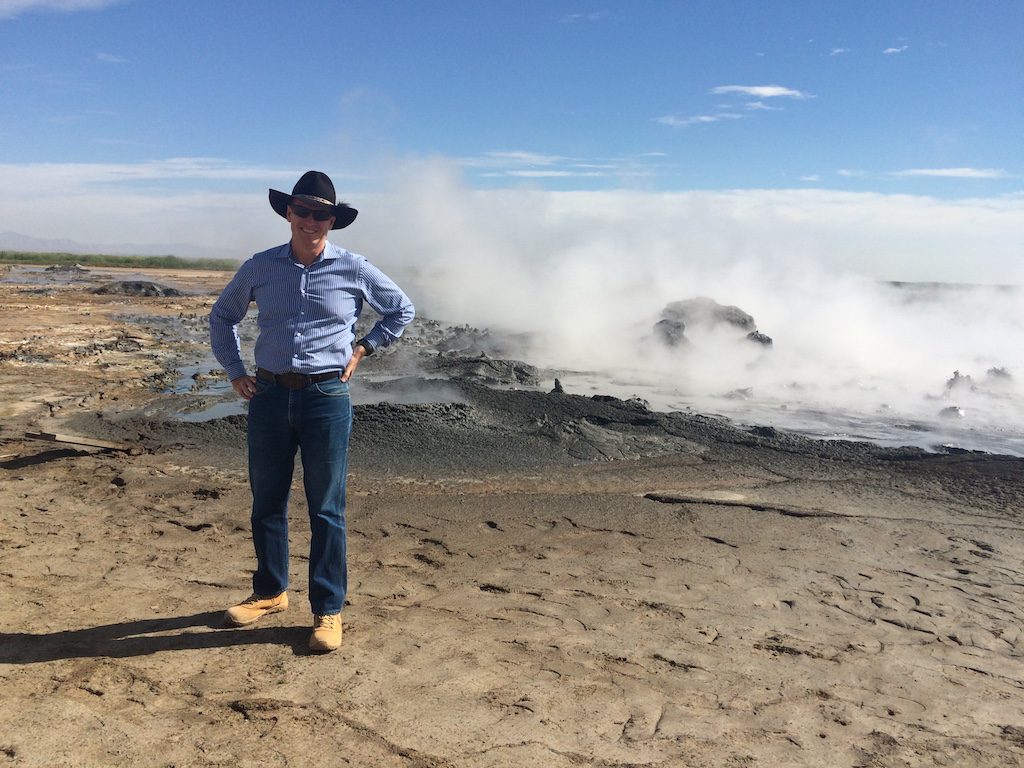Salton Sea geothermal developer ready for federal renewable energy procurement
Geothermal developer Controlled Thermal Resources (CTR) is well placed for the recently announced federal government renewable energy procurement for the Salton Sea area in California with its geothermal power project of up to 280 MW.
In a guest post by Controlled Thermal Resources, the company highlights how they as a developer are well positioned towards the recently announced renewable energy procurement by the federal government in the U.S.
The federal government made an announcement on its commitment to the Salton Sea Restoration and to renewable energy at the annual Lake Tahoe Summit on August 31st. Following the announcement, a Request for Information (RFI) was issued by the Department of Energy (DOE) as part of the Federal Energy Management Plan (FEMP) on the deliverability of newly developed geothermal energy from the Salton Sea. The RFI seeks “to solicit input from industry on options available to the Federal Government for a potential aggregated power purchase of 100-250MW of newly constructed geothermal electricity generated in the Salton Sea area, which lies within the Riverside and Imperial Counties of California, for delivery over a ten-year or twenty-year contract period to serve regional Federal load”.
Controlled Thermal Resources (CTR), a geothermal development corporation was very pleased to hear the Federal Government’s announcement to its commitment to furthering renewable energy development and to the Salton Sea. CTR is developing a utility scale geothermal energy project located within the Salton Sea Known Geothermal Resource Area (SSKGRA) in California’s Imperial Valley. CTR’s development philosophy focuses on minimizing levelized cost of electricity (LCOE) through scale and scalability making geothermal a viable development and investment proposition, whilst in turn assisting to the betterment of the environment by covering recently exposed Salton Sea playa through development.
CTR is developing a new 280MW geothermal power project within the Salton Sea area of California, home to the best geothermal resource in the United States. With an experienced development team, site control through secured land and mineral rights on a long-term basis, and a very positive preliminary resource assessment, CTR has successfully met critical early-development milestones and is progressing through the next steps of securing a PPA, interconnection agreement, and a bankable resource assessment based on its exploration and appraisal program.
The subject lands are the only such geothermal development lands located within the Salton Sea and subsequent receding shoreline. CTR is planning to cover approximately 135acres of exposed playa within its first stage of development, with further mitigation work during subsequent stages of development.
Since first inspecting the subject site in 2013, CTR has witnessed a significant recession of the Salton Sea shoreline. CTR identified the expedition of this recession of the sea in the early stages of its lease identification process with most of the subject lands at that time covered by the Sea. This is mainly to do with the very shallow lens of water only a few inches in depth covering a vast area (Figure 1).

Figure 1. A shallow lens of water, the receding Salton Sea shoreline November 2014 (left). Exposed Playa August 2015, connecting Mullet Island (located on CTR’s site) to the previous shoreline (right)
The announcement by the Federal Government to seek procurement options for geothermal energy from the Salton Sea is based on the goals set out in the Energy Policy Act of 2005, Energy Independence and Security Act of 2007, as well as by the President in Executive Order 13693. With the primary objective of these initiative to decarbonize of the energy market, geothermal energy is one of the most efficient mechanisms for achieving base load energy with an extremely low carbon footprint. In the present energy market in Southern California, intermittent renewable energy sources have reached near saturation and are creating an issue with the supply / demand curve creating what is known as the “duck curve”. To make up for the power production lost as solar loses generation, gas fired power plants are being brought online quickly to make up a 13,000MW energy deficit in the late afternoon and to supply power at night. A study by CEERT/NREL found that the true cost of solar photovoltaic (PV) had an associated carbon footprint due to the gas that is used to back up solar and it has a significantly less efficient use of transmission grid systems. The CO2 emissions per kilowatt-hour (kWh) for various power generation options are tabulated in Table 1.
Table 1. CO2 emissions per kWh for various power generation methods (EIA, 2016), (Caldwell & Anthony, 2016)*

Increasing penetration of [intermittent] renewables like wind and solar actually require an increase in the amount of natural gas-fired backup. And natural gas plants are at their least efficient when they are ramped up and down (Wesoff, 2011).
But the growth of solar and wind power has thrown a wild card in the mix. The sun and wind are much less predictable. “All of a sudden you have a major cloud that comes over a solar field,” says Nancy Traweek, who directs system operations for the grid, and that causes the solar power to drop off. “That [power] needs to come from somewhere else immediately,” she says. So grid operators have to keep the natural gas plants running in the background. If they’re turned off, many take four to eight hours start up again. California’s highest demand for electricity also happens right as the sun goes down, when Californians come home from work and lights turn on. Grid operators need natural gas power plants at the ready to meet that peak and to fill the gap that’s left by solar power (Sommer, 2016).
Geothermal power is a source of energy that can provide clean, renewable, base-load energy. The SSKGRA is one of the world’s most prolific geothermal resources in the world. The power generation potential as of 2002 was estimated as 2,330MW making the SSKGRA the largest geothermal field in the United States. Since 2002, extensive exploration, drilling, denser and better data acquisition from the land portion of the field has expanded the previously estimated potential of the field. Dennis Kaspereit and associates at Geothermal Resources Group have revisited the potential of the SSKGRA and have revised the field boundaries and the potential of the field to 2,950MW. Dennis Kaspereit will be presenting the findings of the paper titled “Updated Conceptual Model and Reserve Estimate for the Salton Sea Geothermal Field, Imperial Valley, California” at the GRC Annual Meeting in Sacramento in October.

Figure 2. Conceptual model shown in red. Proven reserves are shown by the dotted white outline. Light brown is the area and reserves that have been exposed by the receding sea to date, and the darker brown color illustrates the additional area that will be exposed before a project can be completed. Directional drilling could extend that area by 1?2 mile from pads on the exposed lakebed. (Dennis Kaspereit, 2016)
Figure 2 shows the outline of the previous field outline and the newly revised outline of the SSKGRA. The portions that have been developed to date are the south eastern portions that have been dry lands. The figure shows how the SSKGRA extends into the sea and how the receding sea will make a larger portion of the SSKGRA developable due to exposed lands from the receding sea. As the sea recedes and new lands are exposed the accessible potential of the SSKGRA may become as great as 2,950MW (Dennis Kaspereit, 2016).
The Salton Sea is a terminal water body without surface water outflow, water only leaves through evaporation and seepage. At present more water leaves the sea through evaporation than flows into the sea through drains and rivers. The current sea level is not in balance with the rate of inflow and the rate of outflow. Based on current water forecasts the Salton Sea level is estimated to drop to approximately -255ft from its present level of approximately -235ft between now and 2030. As the sea recedes additional playa will be exposed. Approximately 70,000 acres of playa will be exposed by 2030, see Figure 3.

Figure 3. Predicted Salton Sea level change (left) and exposed playa area (right) [Courtesy of “Salton Sea Backbone Infrastructure Project Design Concept Memo”]
The extent of the Salton Sea shoreline recession can be seen from infrared aerial photos taken by NASA between 1984 and 2015 in Figure 4.

Figure 4. Infrared aerial photos of the Salton Sea in 1984 (left) and 2015 (right) (NASA, 2015)
Exposed playa will become a source for fugitive dust which will pose an environmental and health issue for the Imperial Valley. The State of California initiated the Salton Sea Management Plan (SSMP) in October 2015 to manage wildlife habitat creation and fugitive dust suppression to address the receding sea.
The receding Salton Sea poses an environmental and health problem due to the impact of fugitive dust on air quality. But the receding sea also presents an opportunity for restoration/mitigation and renewable energy development to work together. As the sea recedes new land is exposed which, in the southern area, is part of the SSKGRA. The recession of the sea can be turned into a positive development opportunity allowing large amounts of clean, base-load geothermal energy to be developed and for energy developers to work the State of California and the IID to collaborate on restoration efforts.
Works Cited:
- Caldwell, J. H., & Anthony, D. (2016). The Value of Salton Sea Geothermal Development in California’s Carbon Constrained Future. NREL, Center for Energy Efficiency and Renewable Technologies. Sacramento: NREL.
- Dennis Kaspereit, M. M. (2016). Updated Conceptual Model and Reserve Estimate for the Salton Sea Geothermal Field, Imperial Valley, California. Geothermal Resources Council Transactions. 40, p. 11. Sacramento: Geothermal Resources Council.
- EIA. (2016, February 29). US Energy Information Administration. Retrieved from Independent Statistics and Analysis: https://www.eia.gov/tools/faqs/faq.cfm?id=74&t=11
- NASA. (2015, October 9). Earth Observatory. Retrieved from Earth Observatory: http://earthobservatory.nasa.gov/IOTD/view.php?id=86746
- Sommer, L. (2016, April 4). What Will California Do With Too Much Solar? Retrieved from KQED Science: https://ww2.kqed.org/science/2016/04/04/what-will-california-do-with-too-much-solar/
- Wesoff, E. (2011, May 25). GE’s Gas-Fired Plants Could Enable More Wind and Solar Power. Retrieved from Greentechmedia: http://www.greentechmedia.com/articles/read/ge-launching-gas-fired-plants-better-suited-to-wind-and-solar-power
Authors:
- Jim Turner, Business Development Manager, Controlled Thermal Resources, e-mail: jim.turner@cthermal.com
- Rod Colwell, Chief Executive Officer, e-mail rod.colwell@cthermal.com, +61 412 759 878


















